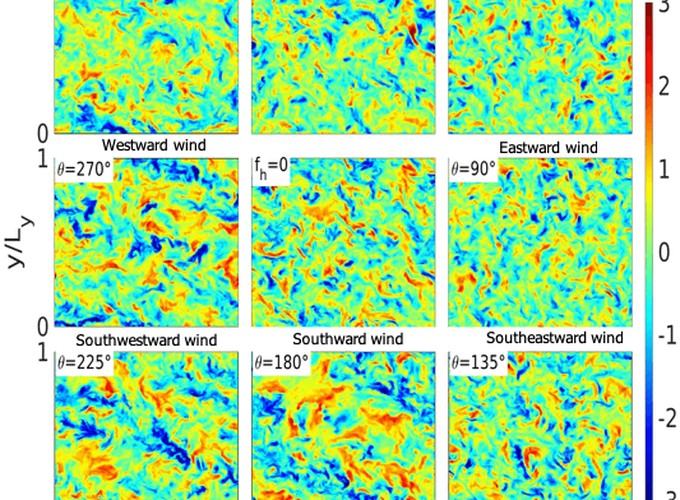Abstract
A large-eddy simulation (LES) model is configured to investigate the effect of the horizontal (northward) component of Earth’s rotation (f_h) on upper-ocean turbulence. The focus is on the variability of the f_h effect with latitude/hemisphere in the presence of surface gravity waves and when capped by a stable stratification beneath the surface layer. When f_h is included, the mean flow, turbulence, and vertical mixing depend on the wind direction. The value and effect of f_h are the largest in the tropics and decrease with increasing latitudes. The variability in turbulent flows to wind direction is different at different latitudes and in opposite hemispheres. When limited by stable stratification, the variability in turbulence intensity to wind direction reduces, but the entrainment rate changes with wind direction. In wave-driven Langmuir turbulence, the variability in mean current to wind direction is reduced, but the variability of turbulence to wind direction is evident. When there is wind-following swell, the variability in the mean current to wind direction is further reduced. When there is strong wind-opposing swell so that the total wave forcing is opposite to the wind, the variability in the mean current to wind direction is reduced, but the variability of turbulence to wind direction is enhanced, compared to in Ekman turbulence. The profiles of eddy viscosity, including its shape and its value, show a strong wind direction dependence for both stratified wind-driven and wave-driven Langmuir turbulence. Our study demonstrates that wind direction is an important parameter to upper-ocean mixing, though it is overlooked in existing ocean models.
